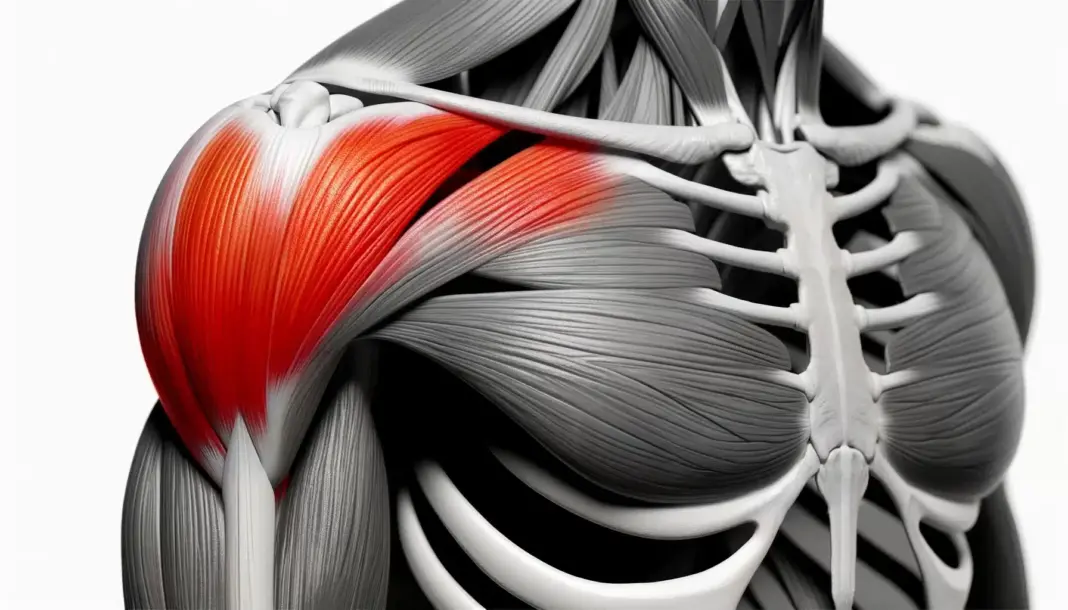Front Delt Isolation Exercises: Max Growth Without Overlap
If you’ve been hammering the bench press, incline press, and overhead press, chances are your front delts (anterior deltoids) are already working overtime.
But here’s the catch: those big compound lifts aren’t always enough to maximize growth—or they might leave your front delts overtrained and imbalanced if you don’t approach isolation work correctly.
This guide breaks down the best front delt isolation exercises, how to fit them into your program without overlapping chest and shoulder work, and practical strategies for bodybuilders at every level.
Why Isolation Matters for Front Delts
The front delts are heavily recruited in pressing, but compound lifts don’t always hit them with the full range of motion or direct tension needed for optimal growth. That’s where isolation comes in.
Benefits of Front Delt Isolation Work
- Target weak points: If your shoulders lag behind your chest and arms, isolation ensures balanced aesthetics.
- Improve mind–muscle connection: Front raises and similar moves help you feel the muscle working.
- Joint-friendly options: Lighter isolation can stimulate growth without joint stress from constant heavy pressing.
Best Front Delt Isolation Exercises
Dumbbell Front Raise
- How to do it: Stand tall with dumbbells at your sides. Raise them in front to shoulder level with controlled motion.
- Why it works: Simple, effective, and hits the anterior delt directly through shoulder flexion.
- Pro tip: Try alternating arms for stricter control and better focus.
Plate Front Raise (or Barbell Plate Raise)
- How to do it: Hold a weight plate with both hands at your thighs. Raise it up to eye level, then lower slowly.
- Why it works: Allows slightly heavier loading than dumbbells while keeping tension constant.
- Pro tip: Keep your arms slightly bent to protect the elbows.
Cable Front Raise
- How to do it: Attach a straight bar or rope to the low pulley. Lift straight in front of you, keeping tension throughout.
- Why it works: Cables provide constant resistance, which is often missing with free weights.
- Pro tip: Use a rope for a neutral grip to reduce shoulder strain.
Landmine Press (as a Hybrid Isolation)
- How to do it: Place a barbell in a landmine attachment. Press the bar up and forward with one or both arms.
- Why it works: Great for those with shoulder discomfort, as the angled press reduces joint stress but keeps tension on the anterior delts.
- Pro tip: Treat this as a light isolation press, not a heavy compound.
Overhead Dumbbell Hold (Isometric Isolation)
- How to do it: Press dumbbells overhead and hold them locked out.
- Why it works: Trains static strength and stability, keeping delts under time-under-tension without heavy movement.
- Pro tip: Add at the end of workouts as a finisher.
Programming: Avoiding Overlap with Chest and Shoulder Presses
The Problem with Overlap
Chest days and shoulder days already tax the front delts. Adding isolation without planning can cause overtraining or even shoulder impingement.
How to Do It Right
- Choose wisely: Pick 1 isolation exercise on pressing-heavy days.
- Volume balance: 3–4 sets of 10–15 reps is plenty.
- Frequency: 1–2 times per week, max.
- Placement: Do isolation after compound lifts, so pressing strength isn’t compromised.
Advanced Variations for Bodybuilders
- Superset chest press + front raises: For massive anterior delt fatigue.
- 1.5 rep front raises: Raise to shoulder height, lower halfway, raise again, then lower fully.
- Pause holds: Add a 1–2 second pause at the top of raises to eliminate momentum.
Common Mistakes in Front Delt Isolation
- Going too heavy – Swinging weights removes tension from the delts.
- Overtraining – Front delts already work hard in most pressing. Keep volume moderate.
- Poor posture – Leaning back turns a front raise into a chest-dominant movement.
- Neglecting balance – Don’t let anterior delt work overpower your side and rear delts.
Sample Front Delt Isolation Add-On
Here’s how to structure isolation into your week:
- Chest Day
- Bench Press (compound)
- Incline Dumbbell Press (compound)
- Dumbbell Front Raise (isolation, 3×12)
- Shoulder Day
- Overhead Press (compound)
- Lateral Raise (side delts)
- Rear Delt Fly (rear delts)
- Cable Front Raise (isolation, 3×12–15)
Practical Takeaways
- Front delt isolation is not about going heavy, but about precision and focus.
- Use isolation work as a tool to balance aesthetics and strength.
- If your anterior delts already dominate, focus more on side and rear delts.
- If they’re lagging, add 1–2 targeted movements weekly for growth.
Conclusion
The front delts may already get hammered from presses, but isolation is the key to shaping, refining, and balancing your shoulder development.
Keep the volume smart, focus on quality reps, and you’ll build front delts that not only look powerful but support stronger pressing strength across the board.





